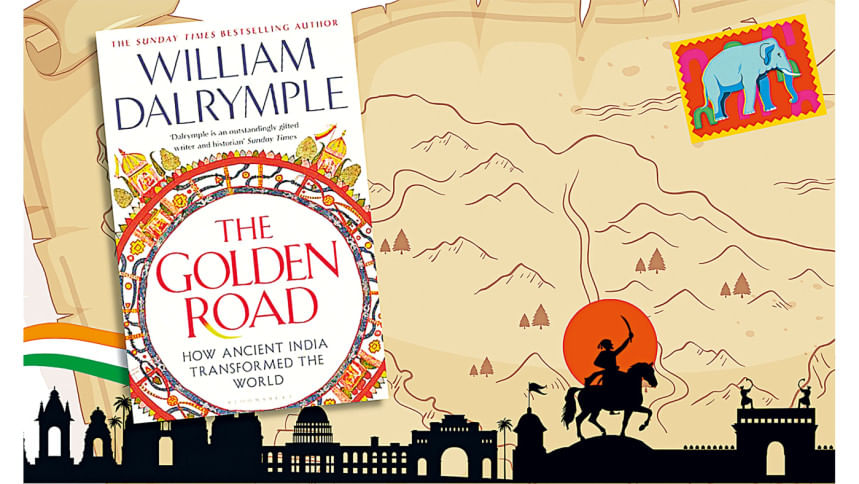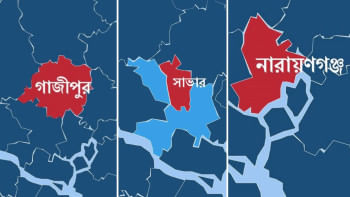The Indosphere and its discontents

In the year 1025, a fleet of warships set sail from the Coromandel Coast of southern India on a mission of conquest. This was the navy of the Chola Emperor Rajendra I, and its target lay across the full, treacherous breadth of the Bay of Bengal—the fabulously wealthy Sumatran empire of Srivijaya. The subsequent campaign was a stunning success, with Indian forces sacking cities across modern-day Indonesia and Malaysia. It was a moment of startling aggression, one that sits uncomfortably with the pious modern narrative of a pacific, eternally non-violent Hindu past. And yet, as William Dalrymple argues in his magnificent book The Golden Road: How Ancient India Transformed the World, this singular act of hard power was an aberration. For a thousand years, the true and lasting Indian empire was not one of conquest, but of culture—a 'soft power' imperium built not with the sword, but with the seductive force of its philosophy, religion, art, and language.
If this narrative of a dominant, culturally expansionist India feels unfamiliar, it is because, as Dalrymple shows, the story itself has been a casualty in the long war of historical interpretation. For a generation, colonial French historians, abetted by Indian nationalists in the Greater India Society, saw this ancient expansion as a flattering mirror to their own supposed "civilising missions", framing it in terms of Ancient Indian Colonies or the Hindu diaspora.
But in the wake of decolonisation, scholars from the newly independent nations of Southeast Asia rightly pushed back against any notion of ancient Indian colonialism—to the point where the very concept of "Indianisation" became almost a dirty word in Southeast Asian university departments. Dalrymple's work is significant for its contrapuntal reading of the historical record, a method that allows him to dismantle two dominant and competing narrative constructions. He simultaneously critiques the hegemonic, orientalist discourse of colonial-era historians while resisting a purely reactive post-colonial framework that might, in its own way, efface the very real agency and cultural power of the pre-colonial Indian state. Having cleared away this intellectual rubble of competing ideologies, Dalrymple reconstructs the machinery of this forgotten empire.
The primary vehicle for this transmission was Sanskrit, which—reinvented from a sacred tongue into a potent literary and political language—became, across much of Asia, the "Language of the Gods in the World of Men", as he puts it. This resulted not in crude imitation but in a creative synthesis Dalrymple likens to "the pizza effect": a visiting Brahmin might have recognised a Khmer king's Sanskrit title but found himself before gods carved with Cambodian features. The intellectual hub of this vibrant Indosphere was the great university of Nalanda, whose prestige compelled Xuanzang's six thousand mile pilgrimage, yet which was ultimately decimated by Turkic fanaticism in what Dalrymple notes was a "civilisational catastrophe" rivaling the infamous burning of Alexandria's library.
William Dalrymple has certainly marshalled a staggering array of evidence—around 200 pages of notes and references drawn from archaeology, epigraphy, art history, and many forgotten texts.
Dalrymple's otherwise magisterial work of history nonetheless left me yearning for a more pugnacious engagement with the great counterexample to India's success: China. In recent years, the idea of a land-based "Silk Road" has found its most eloquent champion in Peter Frankopan, whose own achievement has rightly recentered attention on the commercial and cultural highways of Central Asia. Dalrymple's The Golden Road stands as a direct challenge to this narrative, dismissing it by suggesting that the very term "Silk Road" was a 19th century invention for a prosaic German railway scheme, now conveniently co-opted by Beijing's propagandists. This is a dubious claim, since Matthias Mertens has shown the term predates Von Richthofen's supposed coinage. Nonetheless, Dalrymple glosses over this by noting that the rival "Sinosphere" was a smaller affair, hampered by the "difficulties presented by the Chinese script." A claim of such weight demands a full-throated polemic of its own: a more elaborate argument for why one civilisation succeeded in exporting much of its culture while its powerful neighbour could not.
More troublingly, this great work risks being weaponised by the Hindu far right. A narrative of a glorious, world-shaping Hindu-Buddhist past, however scholarly and nuanced, will inevitably risk being stripped of its subtleties and served up as grist for the mill of the burgeoning Hindu nationalist movement.
Arundhati Roy, writing in 1998 about India's nuclear program in Frontline magazine, remarked acidly: "Yes, I've heard—the bomb is in the Vedas. It might be, but if you look hard enough, you'll find Coke in the Vedas, too. That's the great thing about all religious texts. You can find anything you want in them as long as you know what you're looking for." And so it is with history. The modern Hindu chauvinist, knowing precisely what they are looking for, will find in the past not what was there, but what they need to be there now: a golden age of monolithic Hindu supremacy. The ultimate and most depressing irony, then, is that a book chronicling a history of syncretism, conversation, and cosmopolitan exchange might just be brandished as a cudgel by those who champion its very opposite.
William Dalrymple has certainly marshalled a staggering array of evidence—around 200 pages of notes and references drawn from archaeology, epigraphy, art history, and many forgotten texts. Yet, having finished the book, I am left to wrestle with a troubling paradox.
In his campaign to correct a Eurocentric (and now Sinocentric) map of the past, has he not simply created a new, Indocentric one? The very concept of an "Indosphere"—that "Sanskritic sun" radiating its beams across a receptive Asia—can feel perilously close to exchanging one form of hegemonic gravity for another. Does it not, in its grand sweep, risk diminishing the very agency and indigenous genius of Khmer and Javanese cultures, casting them as mere adapters of an imported culture?
Najmus Sakib studies Linguistics at the University of Dhaka. Reach him on X at @sakib221b.

 For all latest news, follow The Daily Star's Google News channel.
For all latest news, follow The Daily Star's Google News channel. 



Comments